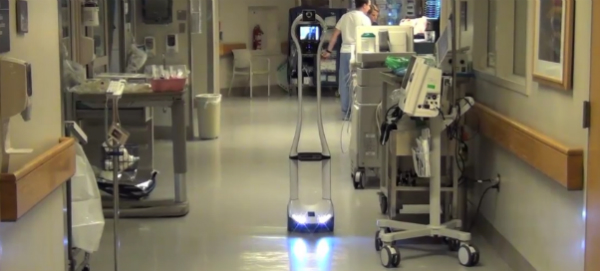
Lacking major changes, the ongoing U.S. healthcare crisis will continue. A lack of trained medical and clinical professionals, increased demand due to chronic diseases in the U.S., and our rapidly aging population worsen any chance of slowing the rise of healthcare costs. Emerging telemedicine applications connect people near and far with medical assistance. Telemedicine ranges from access to unreachable disaster sites to post-surgical care and beyond. Remote site access uses drones to transport equipment and supplies, an instance of one new health tech leveraging another. Robotics can also assist telemedicine.
Cambridge-based Vecna (previously VGo Communications) installs VGo telepresence robots in a variety of healthcare settings. In 2016 we wrote about VGo robots helping homebound children “attend” school virtually. Now the 4-foot high rolling robots work in hospitals, labs, and assisted living facilities. VGo robots save steps and time for nurses who otherwise average 4-5 miles per 12-hour shift. VGo doesn’t help when nurses need to assist patients physically. When nurses check in to see and hear how patients are faring, however, the robot’s video equipment lets them stay in place to work on patient charts and records while the robot moves to the next patient. VGo also aids physician-patient communication and family contact. Family members who live far away can visit patients and confer with doctors faster and much more conveniently with the telepresence robot than with flying across the country or from another part of the world.
Vecna currently has two VGo telepresence robot versions, one which connects with Wi-Fi only and the other with Wi-Fi and Verizon 4G LTE. In addition to reducing care costs, higher level objectives for telepresence robots in health care include faster recovery, reduced readmission rates, and higher patient and family satisfaction.

